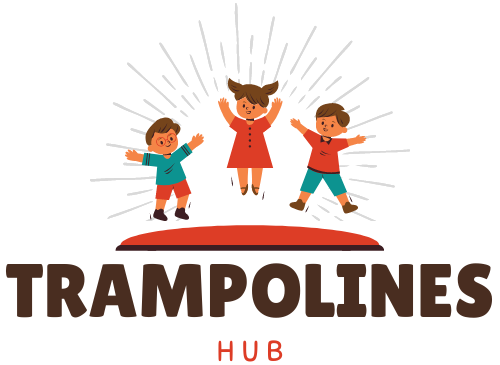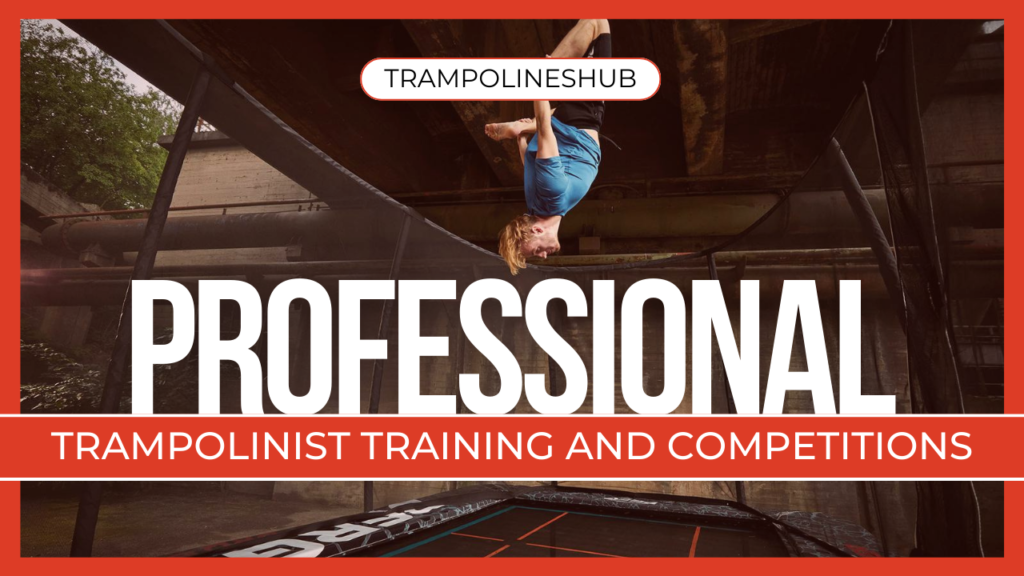
Introduction: Professional Trampolinist Training and Competitions
People with aspirations should try their luck in trampolining, which is a sport involving elegance, acrobatics, and athleticism that can be of great value on one’s way to becoming a professional athlete.
It is both challenging and rewarding on your way to becoming an expert trampolinist, whether you are interested in personal achievement only or want to compete. This guide discusses ways of training and competition for tramps and the ways people can convert their passion into an excellent profession.
For a more detailed guide on how trampolines can be a source of both enjoyment and exercise, check out our article on The Best Trampoline Activities: Merging Fun with Fitness.
1. Professional Training Programs
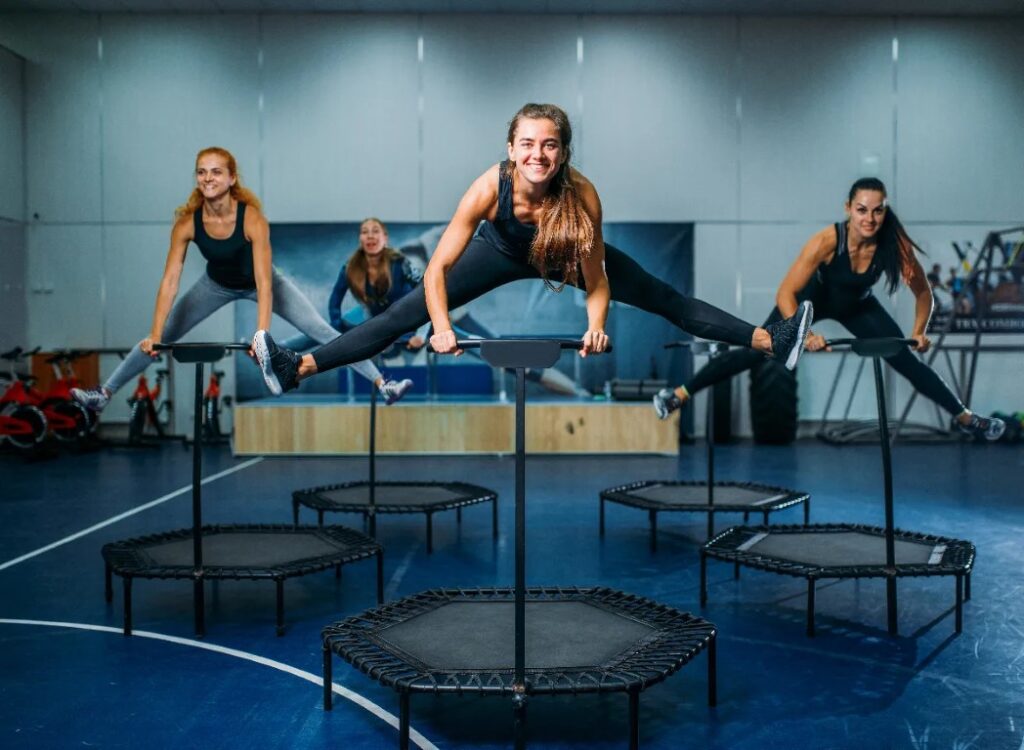
The best place to start a competitive trampolining journey is by landing at an appropriate training program. Professional trampoline training programs provide systematic tutoring, including skills specific to a competitive format for trampolining.
In addition to professional training, exploring a wide range of trampoline activities can be great. Discover some amazing ideas in our guide on Best Trampoline Games: Elevating Fun and Fitness.
Finding the right program:
Research: Try to find reputable training programs that have a history of producing outstanding professionals in the field.
Facilities and Equipment: Modern training requires state-of-the-art facilities and equipment. Make sure there are enough resources for your selected program.
Program Structure: Assess the curriculum as well as the training routine. A good design for such a program seeks to combine skill development, safety, and fitness elements.
Benefits of Structured Coaching:
Expert Guidance: A well-trained coach can offer useful suggestions on techniques, routines, programs, performance strategies, and plans
Personalized Attention: The quality programs provide individual training, giving the attention each athlete needs based on their abilities.
Also Read: What Are Trampolines Made Of? – Everything You Need to Know!
2. Competitive Pathways
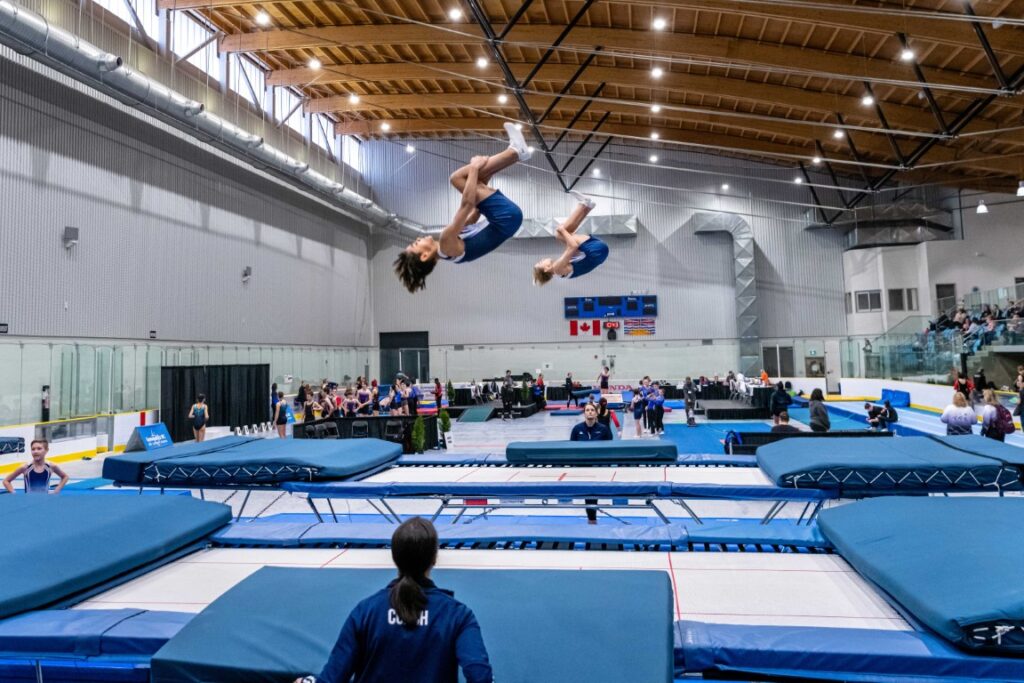
In competitive trampolining, there are different levels, starting with local club competitions and ending with international championships. To be a successful competitive trampolinist, you must understand the specific pathways described above. While keeping in mind the 12 Negative Side Effects of Rebounding – The Truth and also referring to the Leaps & Rebounds article on The Cons of Rebounding
Starting at the Grassroots:
Local Competitions: Start with local tournaments or club competitions. Such events will be good opportunities for a beginner to acquire some experience and self-assurance.
Regional and National Competitions: Move through district, regional, and national levels of competition in which the degree of proficiency and opposition are increased.
Aiming for the International Arena:
International Exposure: Work your way up to international competitions as you gain more skills and experience. Mastering this level demands a lot of time and sophisticated practices.
Continuous Improvement: Competition at the higher level constantly requires improvement, thus adjusting to the changing nature of sport.
3. Certified Coaching and Mentorship

The best quality of coaching is the only key to the success of trampolinist training. Certified coaches have vital knowledge that will contribute to your rapid development as a competitive trampolinist by virtue of their experiences. Also, Our post about How to Set Up a Trampoline In 5 Easy Steps: An Effortless DIY Guide offers additional beneficial information to keep in mind in the training context.
Finding a Certified Coach
Certification and Experience: Find out the most experienced coaches who already have certification as trampoline coaches and have coached other competitive athletes.
Coaching Philosophy: Select a coach who has the same teaching philosophy and style as your learning preferences and goals.
Role of a Coach
Technical Skill Development: Coaches use their expertise to sharpen the techniques, ensuring that all moves and routines are done with care.
Mental and Tactical Training: Coaches not only provide the needed psychological and strategic direction but also help with physical skills, which are the recipe for success in competitions.
4. Joining a Trampoline Club

Trampoline clubs are the best place to find like-minded people because they create an atmosphere that supports growth and development.
Benefits of a Trampoline Club
Community and Support: Inclusion in the club makes one feel part of it and provides some support from other trampolinists.
Shared Resources: Clubs mostly have superior equipment, training facilities, and opportunities to take part in club-organized events.
Engaging in Club Activities
Training Sessions: Clubs hold regular training sessions that ensure peers and coaches continually provide practice feedback.
Club Competitions: Engage in club competition events that provide a good experience for greater occasions.
5. Participation in competitions
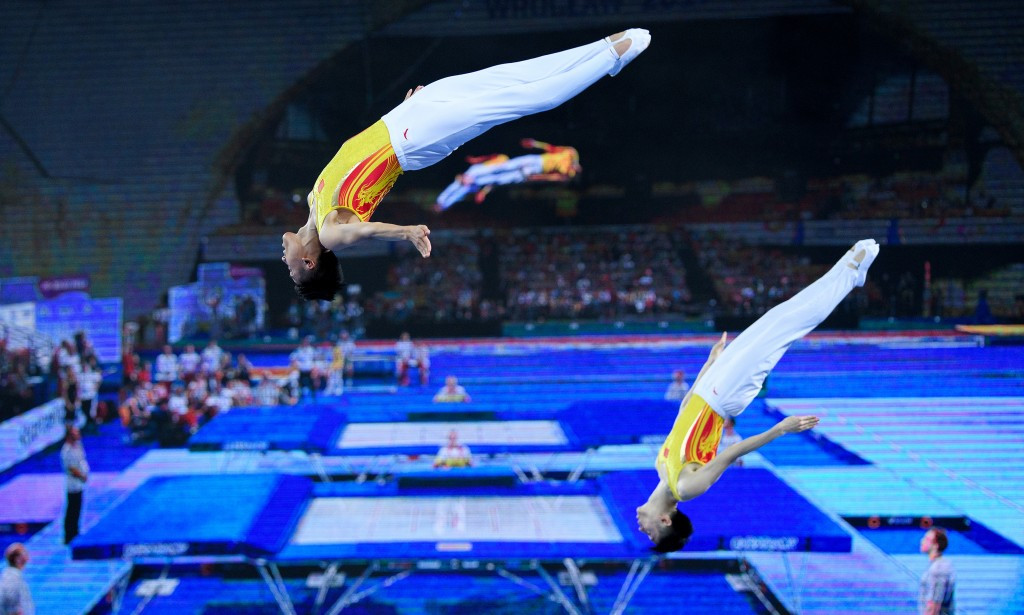
Skills training and mental preparedness are put to the test during trampoline events. Entering contests helps in building skills, gathering feedback, and understanding the competitive landscape.
Preparing for competitions
Routine Development: Build your proficiency and routine with your coach, focusing on the striking components of your strengths to meet competition benchmarks.
Competition Simulation: Simulate competition environments in training to prepare for the pressures of actual events.
Learning from Competitions
Feedback and Evaluation: Use competitions as learning experiences. Judges’ and coaches’ feedback is the best thing for pinpointing weaknesses and areas to improve.
Networking: At a competition, you can see other competitors, their coaches, and people active in the trampoline world.
6. Continued learning and adaptation
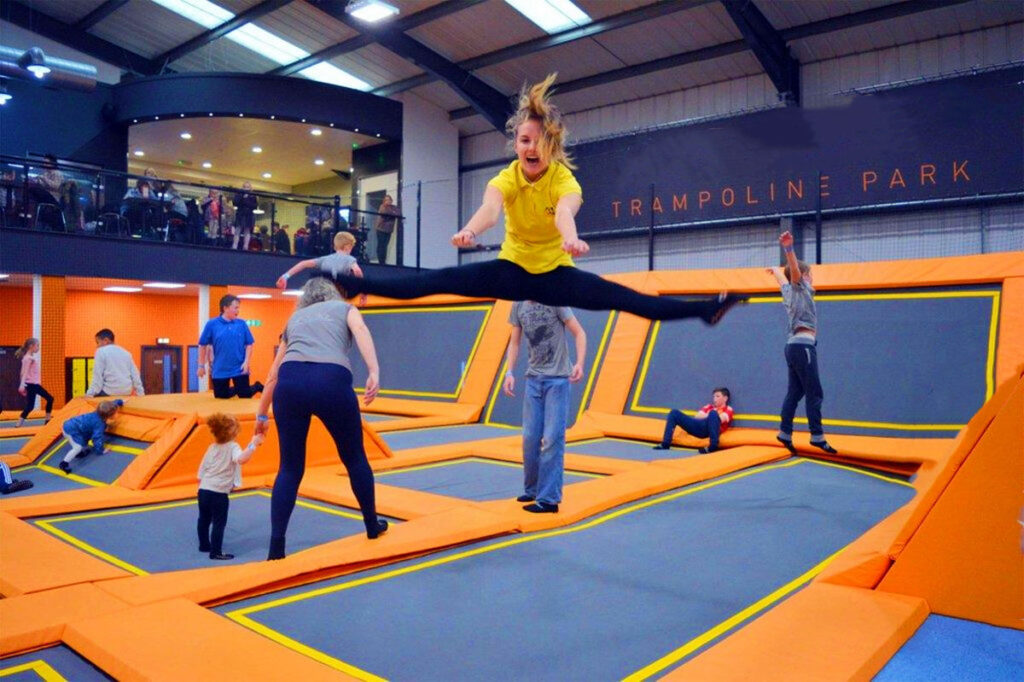
For a current and competitive trampolinist, safety, technique, or competition rules are essential to keep up with.
Keeping Up with Industry Developments
Professional Development: Attend workshops, seminars, and coaching courses to get the latest updates on the development of trampolining.
Rule Changes: Additionally, changes in competition rules and judging criteria should be kept up-to-date by a competitive trampolinist as they influence routine composition and training dedication.
Innovative training techniques
New Training Methods: Training should also be receptive to new training techniques, embrace cross-training, and employ technology in training for better training results.
7. Harnessing Advanced Techniques and Safety

At the more advanced levels of trampolining, one should master the advanced techniques while keeping up with the safety aspects.
To better understand the risks and benefits of advanced trampolining, consider reading Is Trampoline Bad For Knees? – Detailed Answer With Facts
Mastering Advanced Techniques
Complex maneuvers: appreciate the difficulty involved in such routines as flips, twists, and somersaults. However, the mechanics of every sophisticated move must be known and dedicatedly practiced.
Technique Refinement: Continue to work on bettering your techniques, perpetual improvement, and reducing inefficiency and safety incidents. This denotes the position of the body, the timing of bounces, and a sense of space.
Integrating Safety with Advanced Training
Safety Protocols: Undergo advanced techniques under a tight safety protocol. These include the right safety gear and having a spotter or coach.
Injury Prevention: Emphasize injury prevention programs like good warm-up drills and cool-down exercises; hence, training should not be too extreme, and recovery of energy should be sufficient.
8. Navigating the Competitive Landscape
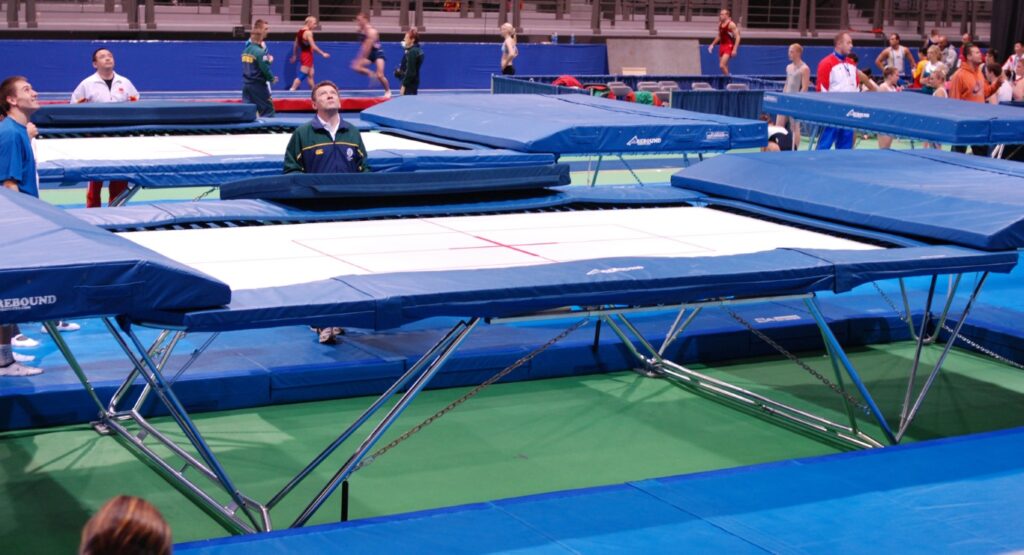
The trampolining landscape is a competitive one, which aspiring athletes need to know and traverse appropriately to strategize for competitions.
Strategies and Adaptations for Success”
Competition Strategy: Establish a strategic competition plan: routine composition, scoring criteria, and competitor analysis.
Adapting to Competition Environments: Learning to compete in different environments could include diverse facilities, spectators, and judging panels.
Mental preparation and resilience
Building Mental Toughness: Forge the mental armor to face competition. Useful methods include mindfulness, meditation, and positive self-talk.
Coping with Setbacks: Develop strategies for handling failures, poor performance, or injury. Resilience and bouncing back are major characteristics for competitive athletes.
9. Expanding Your Trampolining Network
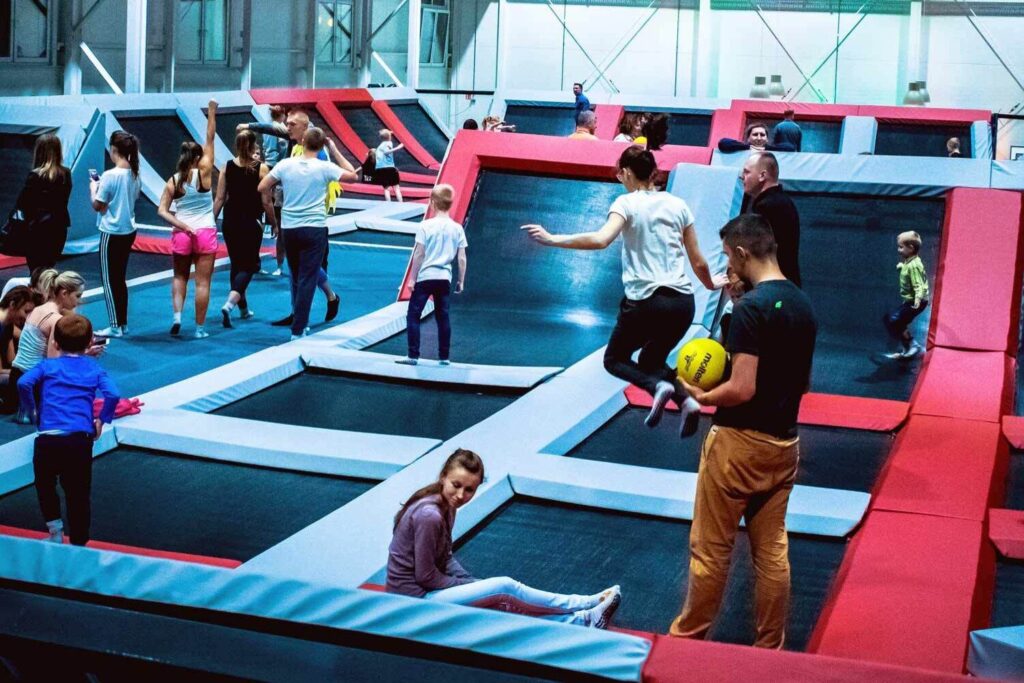
Creating a network increases your probability of scaling higher and having someone mentor you while also placing you in strategic positions for future career opportunities.
Networking Opportunities
Attending Events: Participate in trampolining events, workshops, and seminars. It provides an ideal place to interact with other athletes, coaches, and professionals in that field.
Online Communities: Join online trampolining communities and forums. It is very interesting to see precisely what one individual can do while sharing and asking for advice from a larger community.
Mentorship and role models
Seeking Mentorship: Find someone skilled in trampolining to be your mentor and provide advice, support, and encouragement. The optimal mentor is someone who has been to trampolining competitions.
Learning from Role Models: Look for people involved in the sport that you admire. Therefore, people should learn from their strategies, learn how they succeeded in life, and find a oneness with either failure or success.
10. Embracing technological advancements
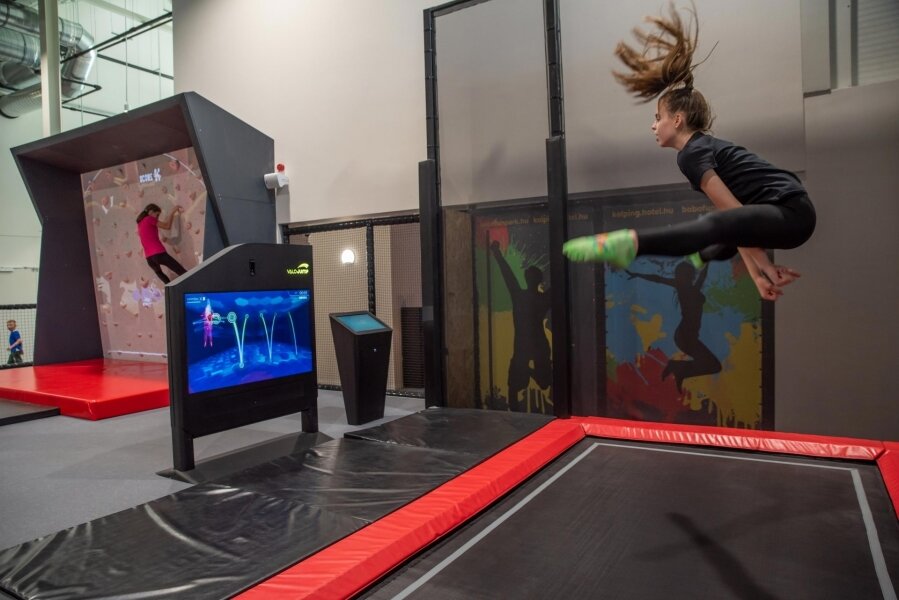
Using technology in trampolines can improve the efficiency of training and increase competitiveness.
Utilizing Technology in Training
Video Analysis Software: Use video analysis software to break down your routine, analyze it, and make the necessary adjustments.
Wearable Technology: Explore wearable devices like those for tracking your moves, how you do jumps, and some that monitor your physical condition.
Virtual training and online resources
Online Training Platforms: Online training platforms and virtual coaching sessions can be used. Virtual coaching can have more benefits, especially when in-person coaching is not possible.
Educational Resources: Add the tutorials, instructional videos, and e-books to your training and knowledge.
Conclusion: Soaring to New Trampolining Heights
The path of a future professional trampolinist is an exciting one, consisting of lots of obstacles but ending with new knowledge and personal growth. The path from the entrance of a training program to international competition requires commitment, discipline, and passion.
Continuously learn, strive for picking up, and seek guidance from coaches, mentors, and the trampoline community. With a great deal of perseverance as well as a love for the sport, trampolining offers the sky and beyond. With every bounce, the closer you get to your dreams in this exhilarating sport; your journey is unique.
